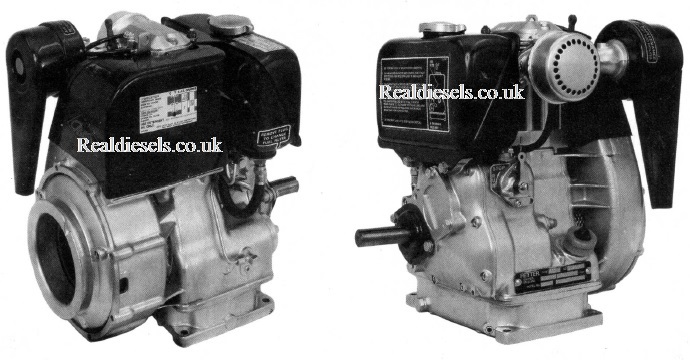
Lister Engine Serial Numbers
Serial number of the engine in the year of manufacture, Engine series / type, Number of cylinders (where required), Code letter Z or A = rotation, Year of.
Contents • • • • • • • • • • • History [ ] 1867-1906: Foundation and growth [ ] The founder of R A Lister and Company was Robert Ashton Lister, who was born in 1845. He led the exhibit of the family's products to the, but on return fell out with his father, [ ] and in the same year founded R.A.Lister and Company in the former Howard's Lower Mill, Water Street in to manufacture agricultural machinery. In 1889 Robert acquired the UK rights to manufacture and sell engineer 's new, which through a spinning centrifugal separator allowed the machine to run at a constant speed and hence create a regular consistency of cream. Marketed in the UK and British Empire as 'The Alexandra Cream Separator', its success resulted in Pedersen moving to Dursley. In 1899, he founded the Cycle Company with Ashton Lister. Robert was a pioneer of business in, and took the first cream separator in that region over the plains of in a journey made by horse buggy.
By the early 1900s, R.A. Listers had redesigned Pedersen's cream separator, expanded its lines of machinery, was producing and wooden barrels for, and from the off-cuts developed a successful line of wood-based. 1907-1928: Petrol engines [ ] In 1909 the company acquired manufacturing rights from the -based firm of F.C. Signalizaciya tiger 2 way car alarm system reviews. Southwell & Co.
For their design of petrol-driven engines (derived from the design of a range of imported engines made by the U.S. During, the factory was focused solely on production, producing petrol engines, lighting sets and munitions.
Many of the men left for the front, meaning that a large portion of the workforce was female. After the war, Sir Robert Lister retired and turned management at Dursley over to his grandsons (sons of Charles Ashton Lister CBE) Robert, Frank, Percy and George together with A.
Charles Ashton Lister managed the company's business in North America and was based in Canada. George managed home sales and Frank was in charge of buying, while Cecil did not have a clearly defined role at all, and, although Robert was the eldest, it was Percy (later Sir Percy) who had by far the most significant impact.
Developing foreign competition meant that the manufacturing of milk churns and barrels ceased, and the over supply of second-hand ex-military engines and lighting sets reduced the company's profit considerably. The company was eventually turned round under Percy's control, aided by the introduction in 1926 of the, used to move goods around factories, railway stations and dockyards the world over; production continued until 1973. As managing director Percy led the firm through a period of significant growth and prosperity in the 1920s and 1930s. By 1926 the workforce was around 2000 and was growing rapidly; the company ran a 24-hour manufacturing operation, expanding its range of products and supplying retailers to around 6000 UK customers and many more worldwide. Retailing revenues were particularly healthy in Australia and New Zealand, where sheep-shearing equipment was in great demand.
1929-1945: Diesel engines [ ] In 1929, Sir Robert died at the age of 84, and in the same year the first of Lister's own design of 'CS' (cold start) diesel engine was made. With one cylinder and producing 9 horsepower (6.7 kW), it became known as the Lister 9-1. This was quickly followed by the 5-1, 10-2, 18-2 and 38-4, all in 1930; the 27-3 in 1931; and 3-1, CD and CE in 1933. Kodi dlya universaljnogo puljta av10. Lister engines were traditionally painted a mid-range shade of, which continues to be used today. The CS is a slow-running (600 rpm) reliable engine, suitable for driving or pumps.

CS type engines gained a reputation for longevity and reliability, especially in countries, to which they were widely exported. Some CS engines ran practically continuously for decades in agricultural, industrial and electrical applications. By 1936 Lister was producing 600 engines across a range of 80 different sizes and types of diesel and petrol models, most of which were small at around 1.5 to 3 hp. These could be bought stand alone (many were used in the construction industry), or powering a complementary range of pumps, churns, cream separators, autotrucks, generating plant and sheep shearing equipment. The branded Woodware Works continued to produce ornamental tubs, garden seats and other ornamental garden furniture. The company headquarters were in an early 16th-century Priory building in Dursley. In the nearby valley was located a foundry, together with a number of other workshops necessary for the production of engines and the various other products offered, including a machining shop, capstan lathe shop, engine assembly lines, and a coopers' shop.
Many goods were shipped out from the nearby, which was located on land leased from Lister. During the late 1920s Sir Robert and Charles Ashton Lister had been responsible for trying to obtain payments of bad debts incurred by American and Canadian farmers during the Great Depression. Being sympathetic to their plight Charles suggested to Sir Robert that Listers should sue the banks for their money. Sir Robert was not impressed. However, Charles remained in Canada where he built up the North American business for Listers as well as pursuing other business opportunities on his own. He returned to England in about 1936 with his second wife, Doris Eleanor, and four new sons, Charles Owen, John, Frederick William and James Hugh.